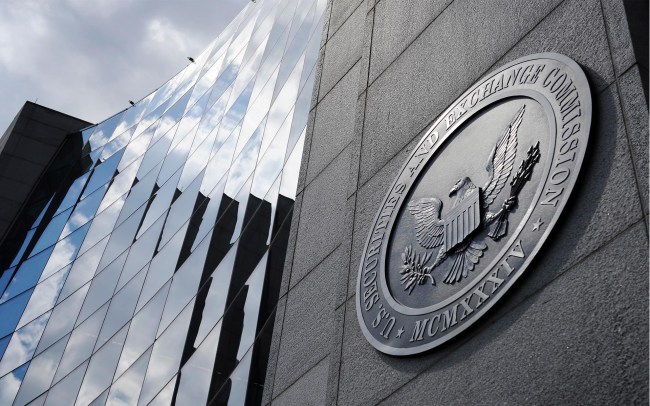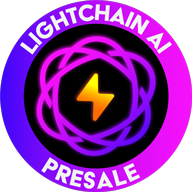
Bitcoinist decided to dig deeper into the SEC’s newly issued guidance on Initial Coin Offerings (ICOs) and its implications for investors. We chatted with three legal experts, namely Alfredo Silva, Joshua Ashley Klayman and Daniel Kahan.
Joshua Klayman is a founding member and the head of MoFo’s Blockchain + Smart Contracts Group. Her practice focuses on finance and corporate matters including advising on leveraged finance transactions, commercial transactions, and corporate governance matters.

Daniel Kahan is an Emerging Companies and Venture Capital lawyer and a member of MoFo’s Blockchain + Smart Contracts Group. His corporate transactional practice focuses on venture capital and private equity investments, as well as strategic technology transactions.

Alfredo Silva is a securities lawyer and a partner in the Corporate Group. He represents public and private companies and investors in a broad range of corporate and securities law matters, including compliance with the U.S. federal securities laws.

SEC Says ‘The DAO’ Token is a Security, But What Else?
Bitcoinist: Unsurprisingly, SEC’s guidance specifically deemed The DAO tokens to be securities. However, it did hint that other tokens could be as well. Is this solely determined by the Howey test?
Alfredo Silva: No. The basic definition of a “security” set forth in Section 2(a)(1) of the Securities Act of 1933, as amended (the “Securities Act”), is very broad in scope, covering a number specific instruments, like stock, bonds and options, as well as any “investment contract.”
The Howey test, first articulated by the U.S. Supreme Court in 1946 and refined by subsequent case law over the years, is intended to help understand what “investment contract” means where there is doubt or question. When we talk about the Howey test, we’re referring collectively to the original Supreme Court case as well as an entire line of subsequent court cases and guidance by the U.S. Securities and Exchange Commission (the “SEC”) in applying the Howey test when interpreting Section 2(a)(1) of the Securities Act.
Some have expressed surprise that the logic first set down in a 71-year-old court case is now central to the discussion in determining whether novel instruments like digital tokens fall under regulation by the Securities Act. However, Howey is an oldie, but a goodie – the Court recognized the inevitability of innovation in financial transactions, so it articulated a test that is intentionally designed to look to the underlying substance of any given instrument, not the form or the name.
That means that even though digital tokens currently are not specifically named as one of the clear categories of securities expressly defined as securities under the Securities Act, the facts and circumstances analysis under Howey means that some digital tokens that look like “investment contracts” may be securities.
That said, there are other tests for whether an instrument is a security. For example, in its 1990 decision in Reves v. Ernst & Young, the Supreme Court adopted the so-called “family resemblance” test, articulating four factors to determine whether an instrument classified as a “note,” one of the explicitly named categories of security under Section 2(a)(1) of the Securities Act.
This test included consideration of the parties’ motivation for entering into the transaction, whether there was a trading market for investment in the instrument, the expectations of the investing public, and whether there were other regulatory schemes applicable to instrument that could reduce risk to the buyer. Interestingly, the Supreme Court subsequently held that even if an instrument did not qualify as a named type of security under the family resemblance test, it still might qualify as an “investment contract” under Howey.
In addition, the states and certain territories each have their own securities regimes, called “Blue Sky” laws, which often mirror federal securities laws in many, but not all, ways. The definition of “security” under Section 25109 of the California Corporate Securities Law of 1968, for example, is clearly derived from the definition in the Securities Act. However, in interpreting its definition of “security,” courts in California and a number of other states have adopted both the Howey test and a “risk capital” test. This latter test focuses more on an investor’s potential losses than potential gains, and is therefore broader than the Howey test.
Bitcoinist: “The Howey test is highly fact-specific. Not all tokens are securities,” explained attorney Marco Santori . What kind of token would absolutely be a security? What type of token wouldn’t? App-tokens? Pre-functional utility tokens? Private currency tokens? Use-or-lose tokens? Where do you think the line will be drawn by the SEC in your opinion?
Alfredo Silva: While many people refer to certain token types by category name, as if they are well-established, static categories, it is important to remember that the digital token market is still in its relative infancy and there is not yet a uniform market understanding of or agreement on what those various terms mean.
There’s no Platonic ideal of an “app token,” and there’s no set of standard characteristics that distinguishes one “category” of tokens from another – the white papers on the tokens are vague and inconsistent, the categories can blend together and overlap, and new token types are continually being developed and proposed.
In contrast, for example, when we talk about “common stock” versus “preferred stock” of a startup, whether we are referring to that of a Delaware, California, Washington or Texas corporation, we still understand what rights typically attach to each because the laws and markets of the major U.S. states have over decades settled at roughly the same terms, with minor distinctions at the margins. If there were clearly defined and long-established token categories, then perhaps the SEC would have provided specific guidance by category.
Although it should be noted that the SEC Report in fact left open the question of whether any tokens are not securities, we can apply the analysis laid out in Howey and Reves to help consider whether the SEC might be more likely to categorize any given token as a security.
Tokens that look more like stock, bonds and other traditional securities – tokens that entitle the buyer to profit share or specified or potential investment returns based on the business operations of the issuer, or where there is great pressure to buy quickly to get into a good deal or lose the potential for return later – are more likely to be classified as securities.
On the other hand, tokens that have some intrinsic value and use to the buyer at the time of issuance and aren’t necessarily intended to be resold or redeemed for greater cash value may look less like securities and more like assets.
Ultimately these are shades on a spectrum, and we cannot go beyond that to say that a token type that looks less like a security will not ultimately be deemed to be a security. In the absence of on-point SEC guidance (such as no-action letters, rule making, etc.), we cannot be sure or offer certainty as to any specific token. For these reasons, additional clarity is being sought from the SEC by issuers, legal advisors and others.
For example, in May of this year, Ouisa Capital, an SEC- and FINRA-registered broker-dealer that operates an alternative trading system (“ATS”) using blockchain technology, filed with the SEC a petition for rulemaking, requesting that the SEC provide a concept release, as well as potential rules regulating digital tokens and distributed ledger technology generally. The petition also requested the SEC to consider adopting a “regulatory sandbox” (akin to what is being used in certain other countries, such as the United Kingdom) with respect to such regulation.

Bitcoinist: Let’s say a token fails the Howey test – could it still be considered a security in some cases? Why?
Alfredo Silva: There are two problems with trying to just rely on the Howey test to determine that a token would not be considered a security. First, you can only get a definitive confirmation of how the Howey test applies to a given instrument one way or the other through litigation or an enforcement action – even a no action letter isn’t completely determinative. Proving a negative is always a challenge, no matter the question, and the determination regarding whether a given token is not a security is no different.
Second, as discussed above, even if Howey might suggest a token is not an investment contract, the Reves “family resemblance” test might suggest a token is another type of security, and other existing or future U.S. federal case law or guidance may also apply. Further, issuers must comply with state Blue Sky laws as well – even a token that would not be regulated by the SEC may be regulated by one or more of the states in which it is issued or sold.
Bitcoinist: Though the SEC called it a currency, can Ethereum be considered a security considering they had their own ICO a few years ago?
Dan Kahan: Certainly investment contracts that are based on Ethereum, like swaps or futures contracts, could be considered a security. Similarly, groups that raise funds to make investments in Ethereum could be issuing securities.
Ether tokens themselves, while traded and the subject of much investment and many investment contracts, are primarily designed to power the Ethereum blockchain, and in many ways function and look more like a commodity, like oil, than like a traditional security.
Yet, as noted earlier, given the early stage of the digital token market and token offerings generally, and the lack of bright-line guidance from the SEC and others, it’s not presently possible to say with certainty whether any token other than The DAO token is or is not a security.
Bitcoinist: Mr. Silva reacted to the SEC guidance stating that even foreign-based platforms dealing in cryptocurrencies “must register as a national securities exchange or operate pursuant to an appropriate exemption.” What key steps must these platforms take to get an exemption?
Josh Klayman: To be clear, this is a quirk of the way U.S. federal laws are written: they generally apply to everyone in the world, with exceptions being available to the extent the person or organization in question doesn’t actually deal in the United States or with U.S. persons or issuers.
The key question is: is the exchange truly a foreign exchange, or does it market into the United States or deal with U.S. persons? This question can be difficult to answer given how many token exchanges operate.
The larger point that we’re trying to make here is that going “offshore” is not always a solution if U.S. persons can purchase in an offering or if there is potential for post-issuance trading of the securities to persons in the United States. Also, it’s important to realize that the definition of “U.S. person” under Regulation S of the Securities Act (“Regulation S”) is a broad one and is not limited, for example, to U.S. citizens.
As we understand it, some issuers had been launching digital token offerings outside the United States with the belief that, so long as a token was not classified as a security in the jurisdiction of its issuance, there was no need to comply with securities laws of other countries, including the United States.
The SEC’s recent guidance makes clear what we had long suspected to be the case: The DAO ran afoul of U.S. securities laws despite the fact that it was operated outside the United States.
The application of U.S. securities laws to non-U.S. issuers is not a new phenomenon and lawyers who deal with cross-border transactions encounter these issues regularly.
Bitcoinist: Argon Group general counsel Emma Channing suggested that Regulation D’s Rule 506(c), which allows general solicitation on a private offering, provides an exemption for ICOs. Could you expand on this?
Dan Kahan: Rule 506(c) under Regulation D of the Securities Act (“Regulation D”) is one of many potential safe harbors that may apply to a securities issuance. It allows for issuers to market and make a securities offering known to the public, but it doesn’t allow for indiscriminate sales to the public – the investors who participate still must be “accredited investors” within the meaning of Rule 501 under Regulation D based on the investors’ income or net worth, and the issuer must take reasonable steps to verify this.
Accordingly, this is not a true crowdfunding rule. In fact, it’s quite the opposite and is often relied upon for the sale of preferred stock in traditional venture capital financings. Essentially, using Rule 506(c) to conduct an ICO means selling tokens in much the same way an issuer would sell stock in a private financing (i.e., to “accredited investors” and not to the general public), while permitting some public disclosure of the offering
Bitcoinist: How does this guidance impact the current ICO landscape? Former Bitcoin Foundation chairman Jon Matonis stated that it “reduces the overall pool of offerings and increased the prospects for the non-US ICOs.” Would you agree?
Alfredo Silva: In the short term, this may well cause some token issuers to seek to conduct their token offerings entirely outside the United States. However, issuers that were paying attention to compliance with the legal requirements around tokens before this announcement often already knew, or should have known, that certain tokens should properly have been treated as securities, and either chose to conduct such token offerings as securities offerings in the United States or launched their token offerings in non-U.S. jurisdictions.
Even prior to the SEC’s digital token guidance last week, many responsible attorneys were advising issuers that one conservative approach with respect to token offerings was to try to avail themselves of an exemption to registration in the United States, such as under Regulation D (by marketing, offering and selling tokens only to “accredited investors”) or Regulation S (by marketing, offering and selling tokens only to those who are not “U.S. persons”). While not necessarily legally dispositive, some issuers took the steps of requiring token purchasers to complete investor questionnaires and provide to the issuer certain representations and covenants at the time of such token purchase, and some issuers tried to block U.S. IP addresses from being able to access token offerings in an effort to deter U.S. persons from participating. And even if in the short term token offerings move offshore, that may only be a temporary phenomenon.
Consider that certain potential non-U.S. jurisdictions may themselves have no, or very little, definitive guidance regarding the classification of digital tokens or the treatment and requirements of digital token offerings, leaving offerings in those locations subject to similar risk as the United States. While other jurisdictions, such as Switzerland, may have provided some guidance, that guidance may be based upon a particular type of token (such as Ether), and there may be uncertainty as to whether such guidance will continue to be applicable to tokens with characteristics that differ from that particular “test case” token.
Query whether staff at the SEC may have connected with their counterparts in foreign jurisdictions in which token offerings are taking place and discussed these issues and whether those other jurisdictions are looking at what the SEC is doing and considering taking steps to follow suit. Indeed, just this Tuesday, August 1, 2017, the Monetary Authority of Singapore, which had previously been seen by many as a jurisdiction par excellence for token offerings, issued a press release clarifying that certain tokens with equity- or debt-like features may be subject to the requirements of Singapore’s Securities and Futures Act.
It comes down to this – if an instrument is not a security simply because one has taken it out of paper form and moved it into an electronic ledger, then theoretically, what would stop any issuer from taking any traditional security and tokenizing it so as to avoid the securities laws of various international jurisdictions? This is of course an absurd result, and as foreign jurisdictions begin to better understand what blockchain tokens are (i.e., a new technology, a new form for representing a set of rights, but not a universally new set of rights itself), we expect that they will begin issuing guidance that is relatively in line with the SEC’s report.
Josh Klayman: Consider also that conducting an offering “offshore” (meaning completely outside of the United States) is harder than it looks. It is critical to remember that the token offering on which the SEC focused its enforcement action last week was an-“offshore” offering. The DAO token offering was launched from Switzerland by a Swiss foundation, but it, nonetheless, was subject to U.S. securities laws and likely violated the rules and regulations of many, many jurisdictions.
Even if a token is initially issued in a proper offshore offering, there may be a “flowback” issue, if tokens initially issued to non-U.S. persons, nonetheless, end up being held by “U.S. persons” due to secondary transfers. Among other things, this may trigger ongoing reporting requirements by the issuer under U.S. law.
So as long as the U.S. is a market that issuers want to reach, U.S. laws will be relevant.
Going offshore can also be fairly difficult as a practical matter. Beyond just choosing a launch jurisdiction – some of the more popular jurisdictions have included Singapore and Switzerland, but many others, including Gibraltar, Luxembourg, Cayman Islands, Malta and others are being used or contemplated – and finding experienced local counsel and other advisors in those jurisdictions to help structure the token offering and prepare relevant documentation, there are many other considerations:
- Tax guidance with respect to digital tokens may be uncertain or unclear, and if there is a nexus to the United States or proceeds of the token offering need to be brought into the U.S., there sometimes may be little or no tax benefit to launching the offering outside of the United States.
- In certain jurisdictions, there may be a token offering organizational structure that is used that differs from what we may see in the United States, such as, in Switzerland, the foundation model, or, in Singapore, use of a plc as issuer. These structures may require the use of complicated intercompany agreements or arrangements, and the organization types involved may have particular governance and other requirements that may be unexpected, undesirable or onerous – for example, a requirement that a director of the issuer must be a citizen of a particular jurisdiction.
- While some non-U.S. jurisdictions use English as an official language others do not. Unless one is fluent in the local language, it may be challenging for an English-speaker to operate in a foreign jurisdiction. In addition, it is important to bear in mind that, while some countries, like the United States, the United Kingdom and Singapore, operate under a common law regime, not all nations do – some have civil law systems and, notably, Switzerland has a triple layer of law, including cantonal law.
- Finally, issuers, investors and others need to be aware that securities laws are not the only laws that apply in the token offering context and that they will need to understand and comply with a full range of applicable laws. This is true not only in the United States, where, among other things, many financial services regulatory (including, for example, money transmitter laws) and other laws need to be considered, but also in other jurisdictions. For example, in its August 1 press release on token offerings, the Monetary Authority of Singapore confirmed that money laundering and terrorist financing risks apply to certain tokens, in addition, potentially, to Singaporean securities laws.
Josh Klayman: The recent SEC guidance may, in some ways, actually expand the pool of potential token offering investors and increase the aggregate amount of capital that is invested in token offerings.
By providing some structure and acknowledging token offerings as a new capital-raising method, some – including venture, private equity and hedge funds, established large financial institutions and Fortune 500 companies, and accredited investors generally – may view the SEC’s statements as validating token offerings as a viable financing method and making it a safer space in which to invest.
Greater legal certainty also may attract reputable issuers wishing to attract capital from such sophisticated – and, often, well capitalized – token purchasers, while deterring token launches by those potential issuers that do not wish to comply with important investor-protection laws and wanted to market, offer and sell tokens to the general public (including potential purchasers who may be unsophisticated and inexperienced investors).

Bitcoinist: What advice do you have for token issuers — who have completed an ICO or are looking to launch one soon — to avoid breaking the law?
Josh Klayman: Hire counsel! If there is any doubt that your token is likely to be classified as a security, a more conservative approach would be to market and sell them as securities.
Remember that regardless of how the U.S. securities laws apply, there are also other bodies of law – money transfer laws, tax laws, consumer protection laws, corporate governance laws, etc. – that may apply and should be carefully considered as well.
And stay tuned! There is a lot that the SEC has not yet addressed, including whether The DAO should have registered as an “investment company” under the Investment Company Act of 1940, as amended (the “’40 Act”), an area in which our investment management colleagues are focused.
Bitcoinist: What advice do you have for US citizens — who have participated in ICO’s or are looking to participate — to avoid breaking the law?
Dan Kahan: Thankfully for token investors, the SEC’s regulations are in place largely to protect you. In fact, one of the SEC’s main concerns for potential investors is that they be wary of buying into fraudulent schemes. To that end, last week, the SEC released an entire bulletin to help protect investors from the risks associated with token offerings.
At the same time, those who have purchased tokens and believe that such tokens may be securities should be mindful of various limitations and obligations that apply to transactions in securities, including antifraud rules and restrictions on resales.
Bitcoinist: Is this is the first step in a critical maturation process? What kind of follow up do you expect from the SEC and when?
Dan Kahan: Yes, we think so. The SEC made clear that new technologies like token offerings and distributed ledgers are not free from compliance with existing laws and regulations. In order for token offerings to become and remain a viable capital raising method that attracts sophisticated investors, responsible issuers and other reputable market participants, this message needed to be sent. Now, the maturation and development of the token market – including the education and protection of token purchasers – is underway.
Alfredo Silva: With The DAO token, the SEC gave us a perfect example of when a token is a security. A next step may be to tell us when, in its judgment, a token should not be considered a security. While the SEC may be unlikely to come out and say directly that a given token is not a security, it can indirectly – but clearly – indicate its stance on a particular matter, including by issuing a “no action” letter.
What we mean when we refer to a “no action letter” is something like this: if a potential token issuer petitions the SEC, proposing to issue a token that will not fall within the definition of a security under the Securities Act, and describing to the SEC in detail the characteristics of that token (including the proposed rights of the applicable token holders) and the offering process therefor, the SEC may, in its discretion, respond in a public writing that, based on the facts and circumstances described in the issuer’s petition, the SEC would recommend that the SEC enforcement division take “no action” against the issuer for failure to register the token offering (or avail itself of an exemption from registration) or to otherwise treat the token as a security.
It is important to remember, however, that the SEC’s issuance of a “no action” letter cannot necessarily be relied on as precedent for a different token or offering, particularly one that does not share the same characteristics as the token or offering described in the petition to which the “no action” letter responds.
Josh Klayman: Additionally, the SEC has not yet addressed numerous other relevant questions, including whether The DAO was an investment company. As such, we expect that we may hear more from the SEC in the near term, especially if additional enforcement actions are brought by the SEC or retail investors suffer significant widespread harm.
What are your thoughts on the future of ICO’s and SEC regulation? Share below!
Images courtesy of Shutterstock




























